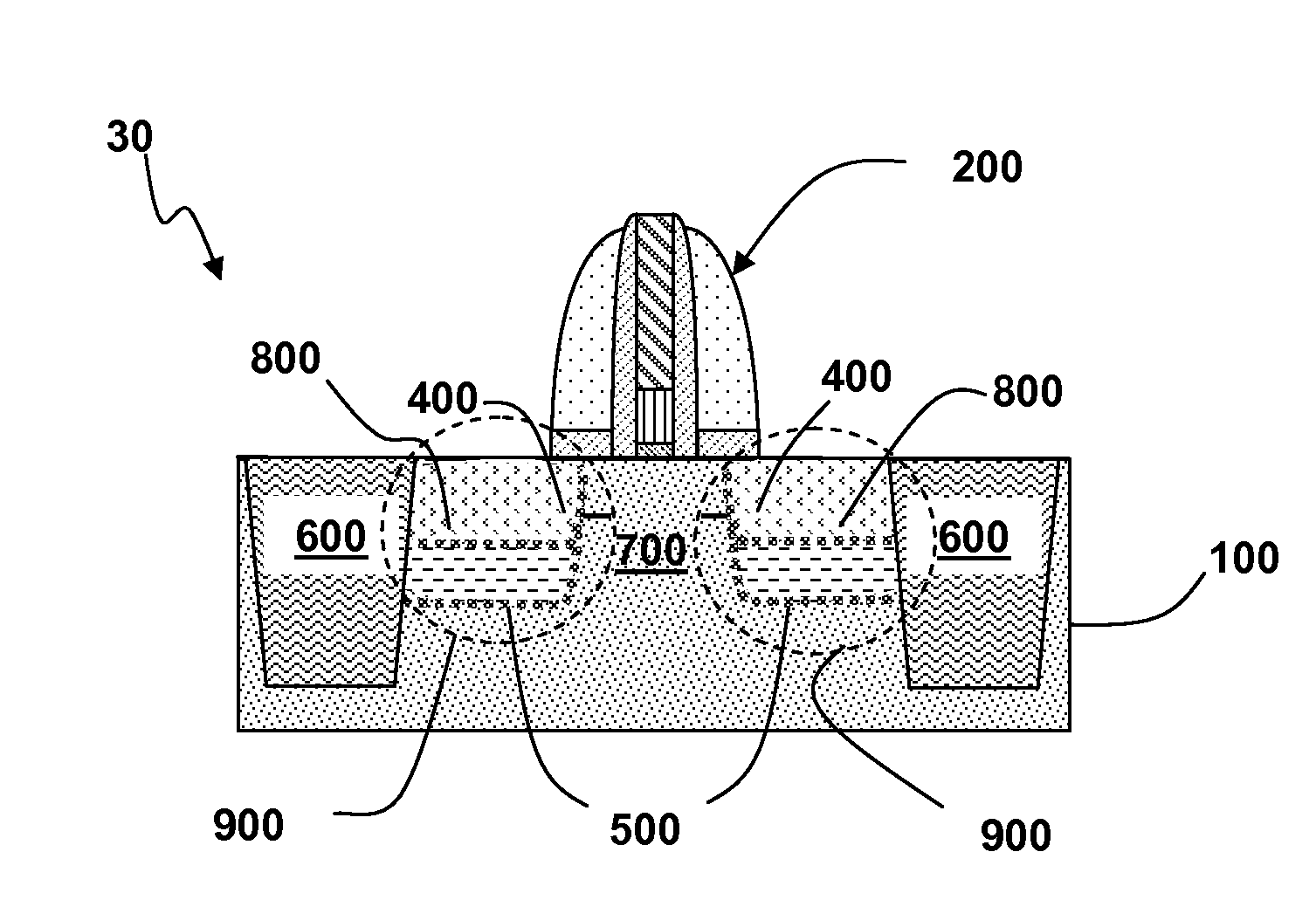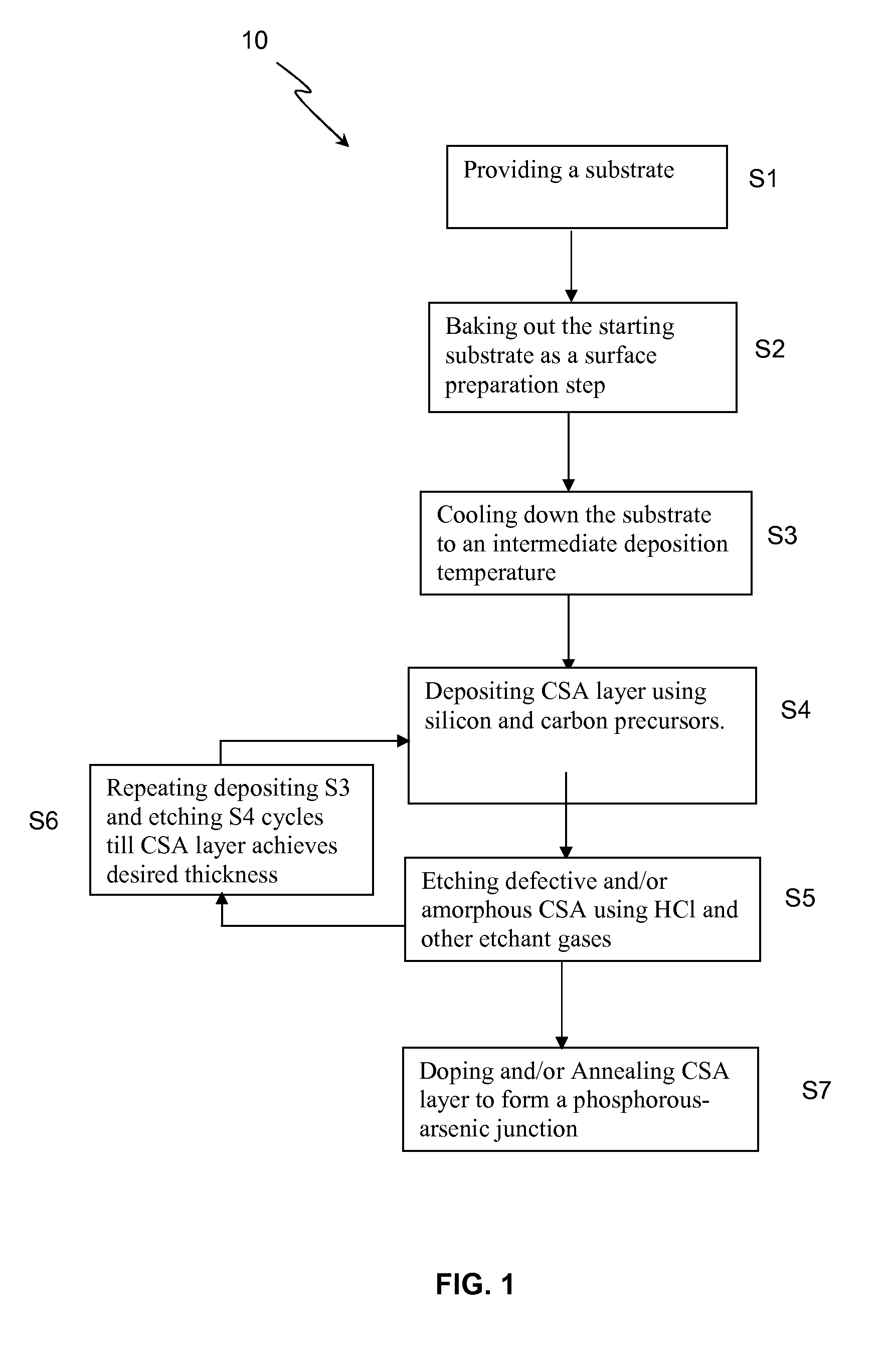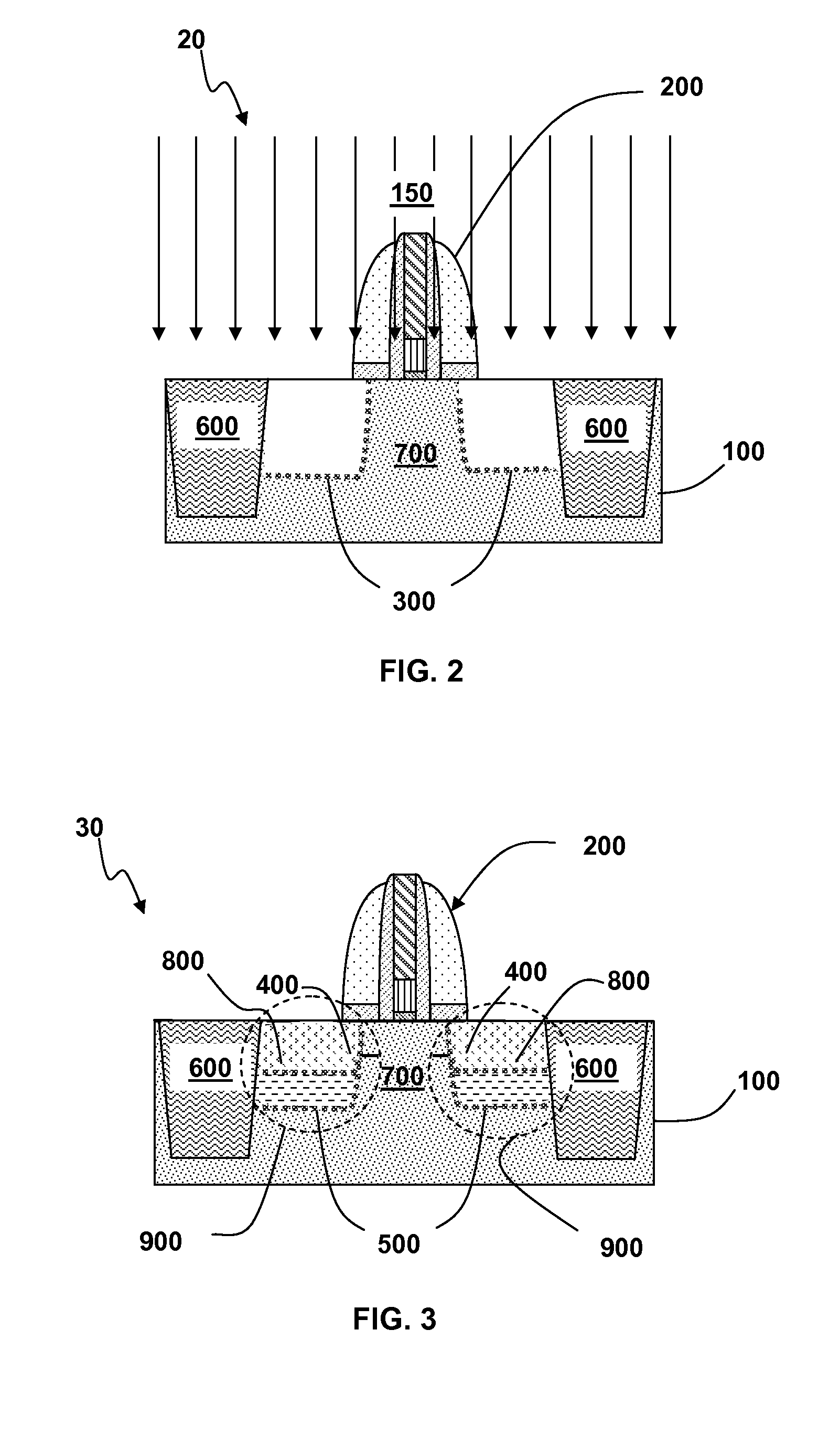Method for forming carbon silicon alloy (CSA) and structures thereof
a technology of carbon silicon alloy and epitaxial growth, which is applied in the direction of basic electric elements, electrical equipment, semiconductor devices, etc., can solve the problems of limiting the use of such epitaxial chemistries of si precursors and etchants for selective deposition of csa, complicated epitaxial growth of csa layers, and compromising the effectiveness of typical etchants, etc., to achieve the effect of enhancing deposition/growth rate, enhancing substitutionality and substitution ra
- Summary
- Abstract
- Description
- Claims
- Application Information
AI Technical Summary
Benefits of technology
Problems solved by technology
Method used
Image
Examples
Embodiment Construction
[0022]Embodiments depicted in the drawings in FIG. 1-3 illustrate the methods and various resulting structure(s) of the different aspects of fabricating an nFET 30 (FIG. 3) in a CMOS using epitaxial layers of CSA disposed on a substrate 100 (FIGS. 2 and 3). Examples of tests results of performance of structures formed by the disclosed method are illustrated in FIGS. 4A-5A.
[0023]FIG. 1 illustrates a flow diagram of a process including processes S1-S7 of an embodiment of the disclosed method. A CMOS semiconductor structure 20 as shown in FIG. 2 is provided in process S1. Semiconductor structure 20 is fabricated according to currently known or later developed techniques. The structure 20 may include a gate 200 disposed on a substrate 100. Substrate 100 may include silicon sites, for example, recesses 300 shown in FIG. 2 and non-silicon sites, for example, shallow trench isolation (STI) 600, incorporated therein. Recesses 300 are formed using currently known or later developed etching t...
PUM
| Property | Measurement | Unit |
|---|---|---|
| temperature | aaaaa | aaaaa |
| temperature | aaaaa | aaaaa |
| temperature | aaaaa | aaaaa |
Abstract
Description
Claims
Application Information
 Login to View More
Login to View More - R&D
- Intellectual Property
- Life Sciences
- Materials
- Tech Scout
- Unparalleled Data Quality
- Higher Quality Content
- 60% Fewer Hallucinations
Browse by: Latest US Patents, China's latest patents, Technical Efficacy Thesaurus, Application Domain, Technology Topic, Popular Technical Reports.
© 2025 PatSnap. All rights reserved.Legal|Privacy policy|Modern Slavery Act Transparency Statement|Sitemap|About US| Contact US: help@patsnap.com



